#farley mowat
Explore tagged Tumblr posts
Text
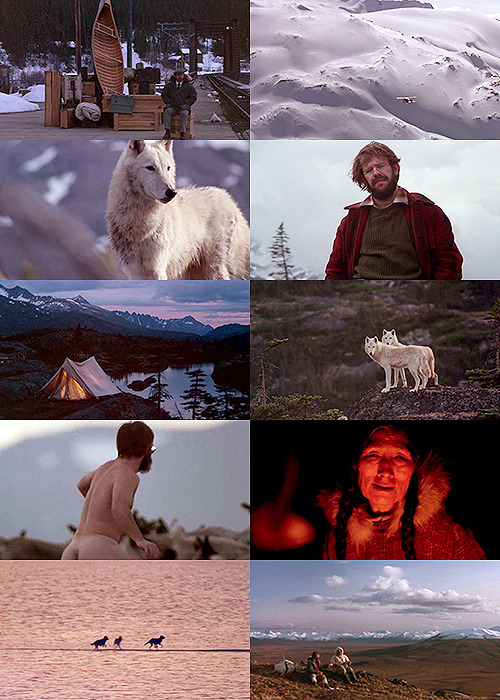
Never Cry Wolf (1983). A government researcher, sent to research the "menace" of wolves in the north, learns about the true beneficial and positive nature of the species.
Is there a director that better understands a person's ability to connect to an animal than Carroll Ballard? While this feels spiritually in tune with his films Fly Away Home and The Black Stallion, this one physically supplants us in the deepest wilderness to pretty magical affect. Gorgeously shot, deeply human and honestly pretty moving, it's Disney at its best (and god, why don't they make films like this anymore?) 8/10.
#never cry wolf#1983#Oscars 56#Nom: Sound#carroll ballard#farley mowat#curtis hanson#sam hamm#charles martin smith#brian dennehy#zachary ittimangnaq#canada#canadian#drama#nature#science#8/10
12 notes
·
View notes
Text
Went through some of my mom's stuff today with a bunch of the family to see who wanted what.
I am quite obviously the nerd of the family cause no one else wanted the Farley Mowat correspondence between him and my grandma (they were cousins).
It's not tons, but there's a few letters and this postcard from around Christmas of 1980

You know, the standard sort of Christmas poetry 🤦♀️
Also my grandmother's name was Helen. He called her Hel (an apt nickname)
5 notes
·
View notes
Text

Never Cry Wolf: The Amazing True Story of Life Among Arctic Wolves, by Farley Mowat, 1963
A holiday gift I've yet to read but REALLY need to
2 notes
·
View notes
Text
1 note
·
View note
Text
Ugh this gets long so I will add it in text:
Loved: Never Cry Wolf by Farley Mowat. (Everyone else in the class hated it.)
Hated: Ramona by Helen Hunt Jackson. (Nobody else in the class liked this one either.)
I think these were both in 7th grade?
So: Never Cry Wolf is a fictionalized auto-bio account of studying wolves in a remote area of Canada in the late 1940s; published in 1963. This was extremely early in terms of wolf study; Mowat had been assigned to study wolves because of government concerns about declining caribou population. What he discovered was that wolves in reality were nothing like the popular misconception of them as bloodthirsty killers, and they were not responsible for over-hunting caribou (that was very clearly due to other humans). In the end, despite his report, the government sent someone in to exterminate the wolf-pack he'd studied.
The book has come in for criticism in more recent years, for its fictionalization, and anthropomorphism of the wolves being studied, among other things. But, I think context is important. When it was published in 1963, wolves were regarded only as vermin to be exterminated, and Mowat's aim was not to publish a scientific study, but a book that would make people sympathize with wolves as a species worth saving.
(I really connected with it because I was already interested in wolves and nature and stuff like that. I'm not sure why my classmates hated it, but I remember they thought it was dumb.)
Meanwhile: Ramona is a book written in 1884, about a mixed-race orphan girl (white and Native American), living in southern California after the Mexican-American war (late 1840s). It was hugely popular when it was published. The aim of the book... well, I'm going to quote from Wikipedia:
Jackson wrote Ramona three years after A Century of Dishonor, her non-fiction study of the mistreatment of Native Americans in the United States. By following that history with a novel, she sought to portray the Indian experience "in a way to move people's hearts."[5] She wanted to arouse public opinion and concern for the betterment of their plight, much as Harriet Beecher Stowe's novel Uncle Tom's Cabin had done for slaves.[6] Her success in this effort was limited.
Jackson intended Ramona to appeal directly to the reader's emotions. The novel's political criticism was clear, but most readers were moved by its romantic vision of colonial California under Spanish and Mexican rule. Jackson had become enamored of the Spanish missions in California, which she romanticized. The story's fictional vision of Franciscan churchmen, señoritas and caballeros permeated the novel and captured the imaginations of readers. Her novel characterized the Americans as villains and the Native Americans as "noble savages".[7]
Many American migrants had looked down on the Hispanic occupants of California when they arrived in the region. The new settlers from northern and midwestern states disparaged what they saw as a decadent culture of leisure and recreation among the elite Latinos, who had huge tracts of land, lived in a region with prevailing mild weather and unusually fertile soil, and relied heavily on Native American laborers. The new settlers favored the Protestant work ethic. This view was not universal, however. American settlers and readers in other regions were taken by Jackson's portrayal of the Spanish and Mexican society. Readers accepted the Californio aristocracy as portrayed and the Ramona myth was born.[8]
So I can see why this was a book that our English teacher wanted us to read and analyze. But I think we were really just too young for it. What I remember thinking was that the style of writing was extremely boring, and I couldn't connect with the characters. (And I want to point out that this is not simply because it was a book written in 1884; I was already reading and loving the original Sherlock Holmes stories, which were written around the same time.) I also think that the teacher probably did not set up the background described above, in order to explain why she wanted us to read it. And since this was in the early 80s, I'm pretty sure that the teacher would not have gotten into the problematic "noble savages" portrayal of Native Americans -- although it could have made for an interesting discussion about the tension between wanting to create sympathy in the audience for a group that were not really being sympathized with at the time of its writing, but why the impression it created was still not accurate and not respectful of that group.
In fact, writing this out now... I realize that there were some pretty direct similarities between the aim of these two books (which, yes, I encountered in the same class). But I don't remember the teacher trying to make that point. Hmm!
we were all forced to read “classics” in school so reblog and put the one you actually ended up liking a lot and the one you can’t fucking stand in the tags
my fave is Lord of the Flies and I ironically enough want to burn every copy of Fahrenheit 451. trash
87K notes
·
View notes
Text
"I ought to have been born by the sea – any sea – and I have a strong suspicion that this inclination is present in all human beings. The ocean calls us for it is the ancient and original home, not only of mankind but of all life."
--Farley Mowat, Born Naked
1 note
·
View note
Text









Gordon Korman just outright owned our souls didn’t he
Bookish 2000s kid reading list (🇨🇦 Specifically Canadian Edition 🇨🇦)


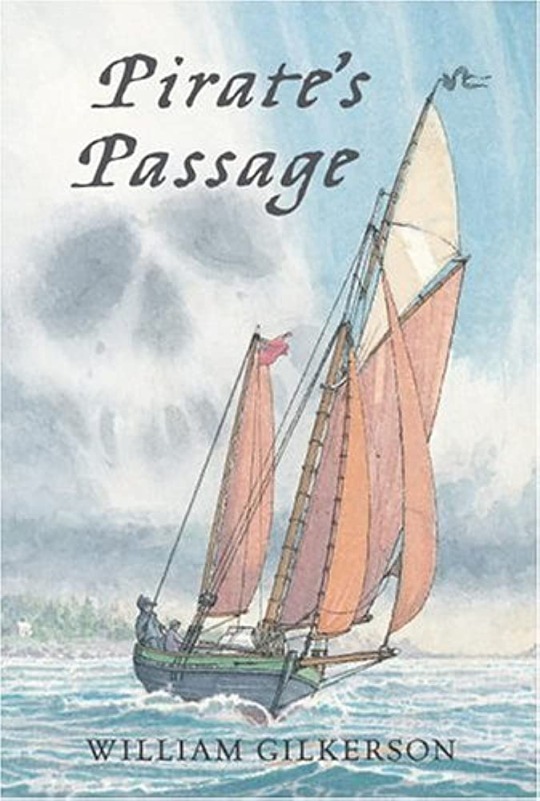

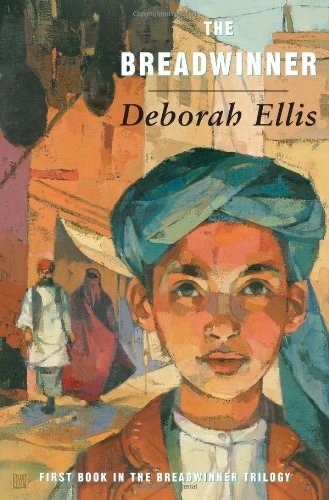


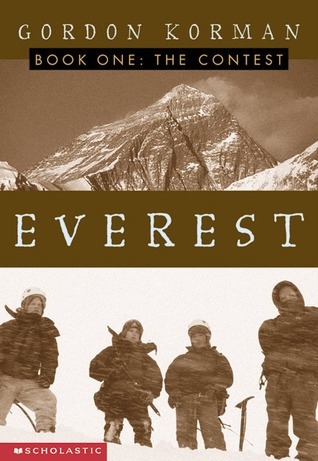
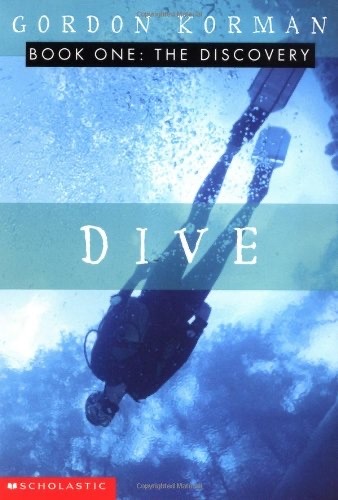
#pirate’s passage#william gilkerson#eric walters#raven’s end#ben gadd#canada#canadian#airborn#airborn trilogy#silverwing#kenneth oppel#the breadwinner#deborah ellis#gordon korman#chasing the falconers#wow canada#Vivien bowers#Arthur slade#dear Canada#we all fall down#anne of green gables#lucy maud montgomery#the dog who wouldn’t be#Farley Mowat#forbidden city#William bell#last sam’s cage#David a poulsen#middle grade#books
30 notes
·
View notes
Text
I just saw a reel on Instagram, which I absolutely refuse to link because I don’t want to give it more views so I attached a recording of some of the more relevant parts above, but basically this woman (who I assume was a photographer due to the cameras and such) was in the middle of the Arctic doing who knows what. She starts off the video saying something “incredible” happened, and the footage then cuts to her being surrounded by roughly 13 wild wolves. Yeah, you read that right. Due to the poor quality that is my recording, I’ll try and break down what’s happening to the best of my ability.
Throughout the video you can see that the wolves seem not quite quite laid back, but aren’t scared. The wolf closest to the camera at roughly seven seconds in is regarding them with a look that kinda says “hey, what’s this?”.* All the wolves are either walking along on their path, or taking a closer look, not necessarily circling the two individuals but definitely keeping an eye on them. This is probably due to them not seeing people at all prior to this experience. Now, I know that might sound odd, but some areas in the Arctic or places super far north in general have wolves that just haven’t seen people. There was a documentary (which I forget the name of) that covered researchers interacting with a pack who hadn’t seen people. There was also a book (Never Cry Wolf by Farley Mowat) published a while ago that dealt with a pack similarly. When described, the behavior in both the book and documentary kinda reminds me of the wolves in this video.
A quick look at the animals tells me these people aren’t in any real danger, however, should the wolves get more curious and get closer things could probably get a bit tricky. Wolves being naturally neophobic, attacks on humans from healthy wild wolves are slim to none these days. Plus, you really shouldn’t interact with wild animals no matter what they’re acting like. Preferably these people would’ve tried scaring them away the second they saw them approaching (acting aggressive, maintaining eye contact, and whatever you do, don’t run!), but instead, we had to have a Disney princess moment.
In the extremely rare chance that the wolves had seen these people as food, we would be seeing more quicker movement, heads below their shoulders**, various behaviors to test and see whether the people were fit enough for a snack, etc. though this is not the case here. So why, might you be wondering, is this bad if the wolves aren’t hunting the people and the people aren’t interacting with the wolves?
Well, you should never, never, interact with wild animals like this, which if you’ve been following my blog for a while now you probably already know. These wolves, if they so happen to see people again, now associate people with something they can get close to without them getting hurt, which works great if you want a cool selfie, but isn’t good if you are a park ranger, a worried parent, or any other person in a position of authority really, let alone if you have a gun. Historically, if a wild animal (especially a wolf!) gets too close to people, they get shot. It doesn’t matter if the animal was exhibiting dangerous behavior or not, people can’t risk it. Basically, wolf getting closer to people and realizing they can do it without problems = them trying again at a time where things are different and people think “oh no, big and wolf!” and kill it.
I’m not sure how the encounter ended, but later footage shows the wolves farther away rallying as a group, so I assume everything went okayish despite the obvious errors. TL:DR, these people are endangering these animals with their need for a cool video, don’t be a Disney princess, and stay away from wild animals even if they look friendly.
*the wolf closest to the camera has its ears kinda flat and to the side, this is called airplane ears by some biologists (yes seriously) and it is a sign of uncertainty.
**fun fact: theories vary, but some have guessed that prey animals can tell whether a wolf is hunting from whether or not their heads are below their shoulders or not! This would explain why we see videos of wolves calmly walking passed a herd of elk while they stay rested, and why other times the elk will bolt as soon as they see the predator.
336 notes
·
View notes
Text


November Recap:
November sucked, except for friends and tasty food. But I did get some reading done (18 books w/ 4 rereads and a DNF). Other than my comfort re-reads, I didn't read anything that was truly standout, but I did read a lot of fun distracting things.
Phoenix Unbound by Grace Draven: 4.25/5
Forever Theirs by Katee Robert: 4/5
Theirs Ever After by Katee Robert: 4/5
The Furthest Station by Ben Aaronovitch: 3.5/5
Anne of the Island by L. M. Montgomery: 5/5, re-read
Gunmetal Magic by Ilona Andrews: 4.25/5
Magic Gifts by Ilona Andrews: 4.25/5
What Abigail Did That Summer by Ben Aaronovitch: 4/5
Have His Carcase by Dorothy Sayers: 5/5, re-read
A College of Magics by Caroline Stevermer: 4.25/5, re-read
Funny Story by Emily Henry: 4.25/5
The Boat Who Wouldn't Float by Farley Mowat: 3.5/5
The Good, the Bad, and the Undead by Kim Harrison: 3/5
New Adventures in Space Opera ed. by Jonathan Strahan: 4/5
Murder Must Advertise by Dorothy Sayers: 4/5, re-read
The Trials of Empire by Richard Swan: 2.5/5, dnf
Queen Takes Rose by Katee Robert: 1.5/5
The Saint of Bright Doors by Vajra Chandrasekera: 3.5/5
Goals below the cut:
Complete series: +2 series on my list (-3)
Catch up on backlists: 34 (+1)
Read FIYAH/Nebula/Hugo finalists & awards: 11 books (+1)
Read down TBR: at end of September it’s 1557 (+13 alas but not too bad)
Read old top-of-TBR list: 6 (+1; on to a new set of three!)
2 notes
·
View notes
Text
lost in the barrens taken from the 1956 farley mowat book.
i’ve learned my lesson.
let’s go for a little hunt.
it’s a wonder you didn’t kill yourself.
you’ll do well enough when i’m gone, but remember one thing.
you’d better leave me and walk back by yourself.
let’s see your leg.
today my son came back from the shadow world.
i bet it hurts, but it isn’t broken. only bruised.
all the food in the world won’t help us if we’re going to freeze to death.
it looks like any other pile of rocks to me.
get up! you’ll die if you lie there!
looks like you’ve found a friend.
robbing the dead is evil.
you are like the weasel that climbed into the cook-stove to see if it was hot, and got roasted for his trouble.
a bunch of rocks can’t hurt you.
better get the rifle ready.
this sitting around drives me crazy.
it’s bad enough here. but we can take it, as long as our food and wood hold out.
but what you’re worrying about won’t happen.
why not have a try at the bow and arrows?
sometimes you chatter like a child.
that was the worst thing that ever happened to me.
it’s going to take a week of darn hard work.
5 notes
·
View notes
Note
Is Buddy a specific breed of dog?
shes a chocolate lab :) her design is based heavily off of the st johns water dog though, which is an extinct breed of dog from newfoundland!!
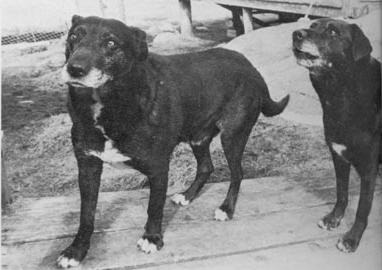
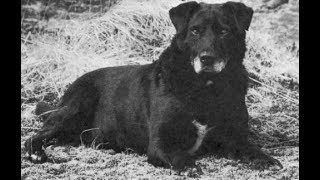
they were often owned by fishermen and would help bring back in nets from the water they loveeed swimming and they had oily coats and some webbing on their paws so they were real good at it... i really really love them theyre so interesting and beautiful to me <33 and theyre part of what was bred to create modern retrievers!! when labs have tuxedo patterns on their coats that can pretty commonly be attributed to their st johns dna which i think is really cool, being able to see a part of history and an extinct breed in your own dog in your house... so so fucking awesome...
they didnt go extinct until the 80s, so theres video of them! this interview with farley mowat is the only one i know of, but im always on the look out... theres a very sweet clip towards the end of the video where he tells it a story and plays with it a bit :)
5 notes
·
View notes
Text
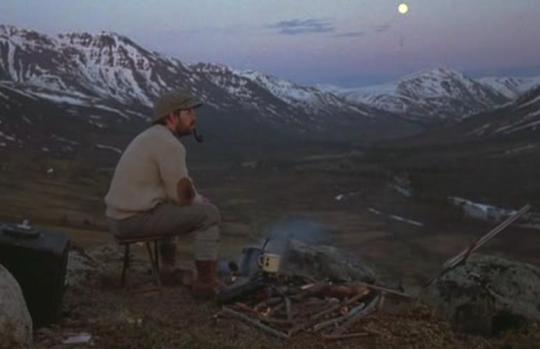
Charles Martin Smith devoted almost three years to filming "Never Cry Wolf" (1983). Smith said, "I was much more closely involved in that picture than I had been in any other film. Not only acting, but writing and the whole creative process." He also found the process difficult. "During much of the two-year shooting schedule in Canada’s Yukon and in Nome, Alaska, I was the only actor present. It was the loneliest film I’ve ever worked on." During the filming, he became so enamored of the Northwest that he decided to relocate to Vancouver, British Columbia, where he has resided since the mid-1980s.
Nearly a third of the movie's budget went into filming the scene of Smith's character running with the caribou. Several helicopters flew overhead, herding the caribou, before the wolves were released. The filming took twenty hours a day for a month
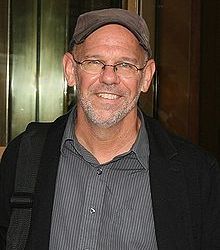
Although all the wolves used in the movie were tamed, the cameraman had to hold a chicken above his head to draw their attention to him. When needed, he gave the poultry a good jolt, causing the chicken to shake its wings violently and making the wolves stare, puzzled.

Carroll Ballard, director of "Never Cry Wolf," asked Smith to write much of the narration for the film. Smith also performed in a lengthy scene with wolves and caribou in which he was entirely naked. IMDb says that this is NOT the first Disney film to feature naked buttocks. That honor goes to "Pollyanna" (1960) which opens with a close-up of naked male buttocks as a child swings on a rope into a pond.
While working on this production, Smith formed a solid friendship with Farley Mowat, the author of the book that the film was based on, and the two remained friends until Mowat's death in 2014. (Wikipedia/IMDb)
Happy Birthday, Charles Martin Smith!Charles Martin Smith devoted almost three years to filming "Never Cry Wolf" (1983). Smith said, "I was much more closely involved in that picture than I had been in any other film. Not only acting, but writing and the whole creative process." He also found the process difficult. "During much of the two-year shooting schedule in Canada’s Yukon and in Nome, Alaska, I was the only actor present. It was the loneliest film I’ve ever worked on." During the filming, he became so enamored of the Northwest that he decided to relocate to Vancouver, British Columbia, where he has resided since the mid-1980s.
Nearly a third of the movie's budget went into filming the scene of Smith's character running with the caribou. Several helicopters flew overhead, herding the caribou, before the wolves were released. The filming took twenty hours a day for a month.
Although all the wolves used in the movie were tamed, the cameraman had to hold a chicken above his head to draw their attention to him. When needed, he gave the poultry a good jolt, causing the chicken to shake its wings violently and making the wolves stare, puzzled.
Carroll Ballard, director of "Never Cry Wolf," asked Smith to write much of the narration for the film. Smith also performed in a lengthy scene with wolves and caribou in which he was entirely naked. IMDb says that this is NOT the first Disney film to feature naked buttocks. That honor goes to "Pollyanna" (1960) which opens with a close-up of naked male buttocks as a child swings on a rope into a pond.
While working on this production, Smith formed a solid friendship with Farley Mowat, the author of the book that the film was based on, and the two remained friends until Mowat's death in 2014. (Wikipedia/IMDb)
Happy Birthday, Charles Martin Smith!
2 notes
·
View notes
Text

Never Cry Wolf (1983)
Directed by Carroll Ballard
A scientific researcher, sent on a government study: The Lupus Project, must investigate the possible "menace" of wolves in the north. To do so, he must survive in the wilderness for six months on his own. In the course of these events, he learns about the true beneficial and positive nature of the wolf species. Based on the book and true story by Farley Mowat.
2 notes
·
View notes
Text
Racebending and representation
If I’m not mistaken, there are people who do racebend existing characters if because they can’t see themselves in the media they consume. If you wanted me to be honest, while Arrow gave us the Felicity Smoak we know through Emily Bett Rickards yet I can’t see her as Felicity. To me, Felicity Smoak is somebody who works as a seamstress and dressmaker.
She’s Indian and rather shy and mistrusting, not to mention she can turn into a striped hyena whenever she’s stressed out or emotional. Strangely enough, upon learning that Felicity Smoak first appeared in the Firestorm comics (the one with a nuclear powered superhero) alongside the Hyena this would make this Felicity Smoak a proper modernisation.
Perhaps in a way Arrow’s Felicity Smoak isn’t as she’s suspected of being a modernised Chloe Sullivan, the girl who pined over Superman in Smallville. As for Valentina Vostok, she’s a character from the Doom Patrol comics and she’s Russian. But she’s not white to me, despite her usual portrayal (until recently if she ever gets racebent at all). She’s Yakut from the Sakha Republic.
Russia has nonwhite people, not just as immigrants but also as indigenous people especially as Russia expanded eastwards. So she’s going to be an indigenous woman in this regards, one whose ancestors and people are native to Siberia prior to Russian expansion and colonisation. The fact that all the Russians who appear in superhero comics are white is saying.
So if she does become a Yakut in DC Rebirth, that would provide much-needed representation for such a demographic outside of Russian media (if it does exist at all) that it would be a real milestone. So far, the most well-known western representation of indigenous Siberians is a nonfiction book by Farley Mowat. Indigenous Siberians are practically obscure.
Especially if virtually all Russians represented in western fiction are white, even though nonwhite Russians do show up in Russian media (however in possibly demeaning ways). I think if DC does bother making Felicity Indian and Valentina Yakut for both DC Rebirth and the DCEU, it will be controversial to those used to their white incarnations.
But it would be the representation some have yearned for.
#dc comics#felicity smoak#racebending#arrow#chloe sullivan#smallville#valentina vostok#doom patrol#representation#yakutia#russia#arrowverse#dctvu
7 notes
·
View notes
Text

"Never Cry Wolf : Amazing True Story of Life Among Arctic Wolves" by Farley Mowat
0 notes
Text
This Date In Manka Bros. History - February 15, 1927
Studio chief Khan Manka (Sr.) has a change of heart and rehires 1,233 of 1,234 employees fired on Valentine’s Day. Only studio janitor Farley Mowat remains fired.

1 note
·
View note